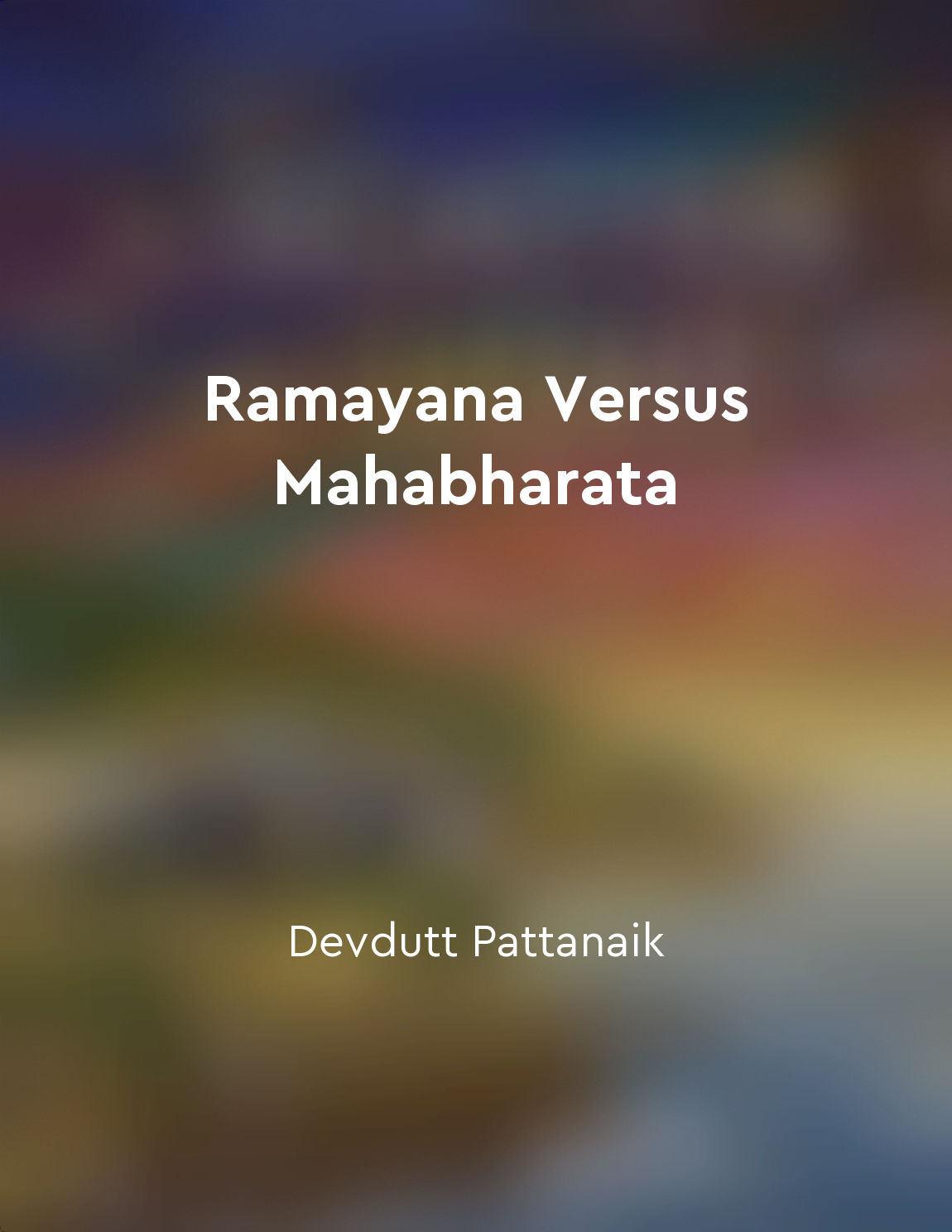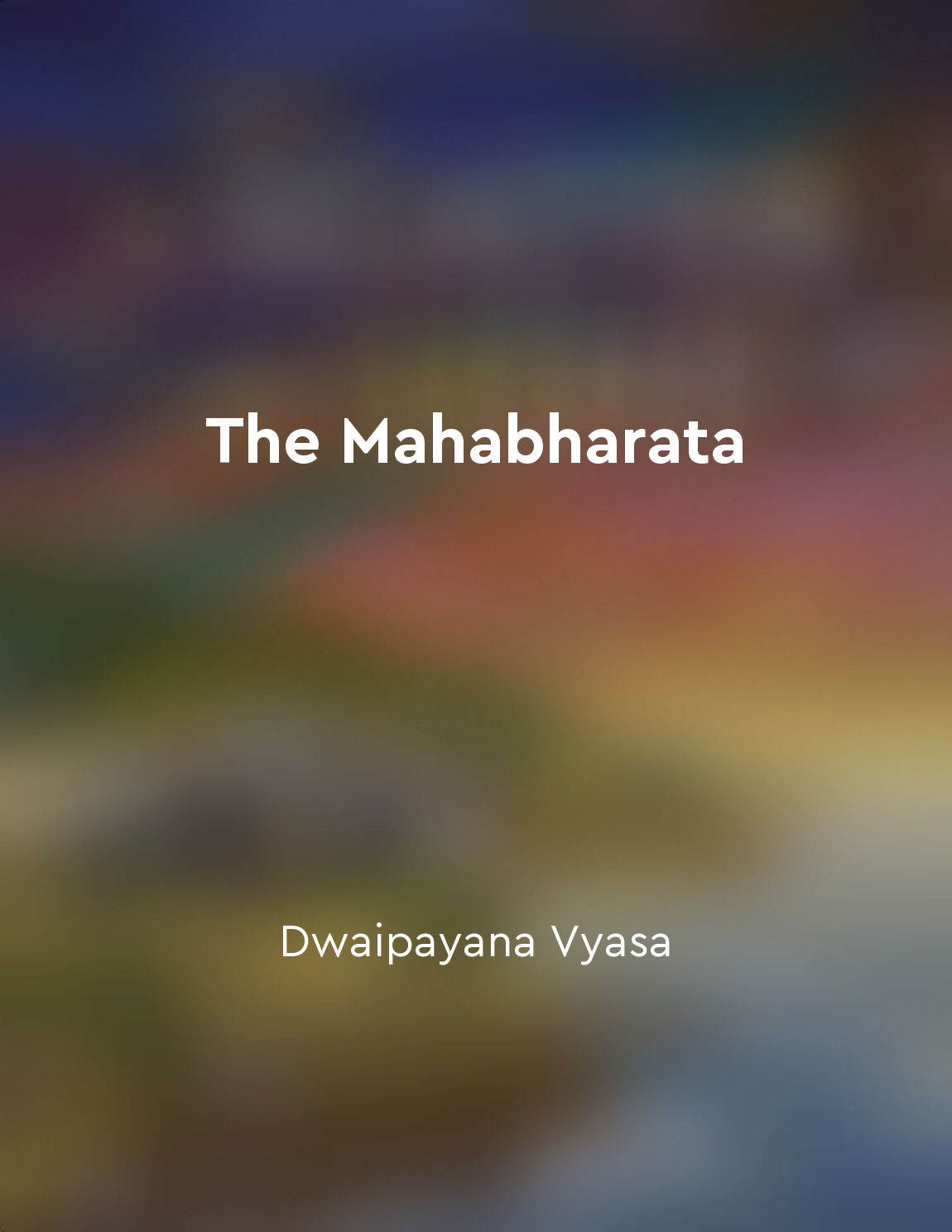Ramayana is poetic, Mahabharata is dramatic from "summary" of Ramayana Versus Mahabharata by Devdutt Pattanaik
In the Indian storytelling tradition, the Ramayana is often described as poetic, while the Mahabharata is seen as dramatic. This distinction reflects the unique characteristics of each epic and highlights the different ways in which they engage with their audiences. The Ramayana, attributed to the sage Valmiki, is a lyrical and melodious narrative that unfolds like a beautiful poem. It is filled with descriptive imagery, metaphors, and rhythmic verses that create a sense of harmony and aesthetic pleasure. The story of Rama's quest to rescue his wife Sita from the demon king Ravana is told with a sense of tranquility and elegance that is characteristic of classical Indian poetry. On the other hand, the Mahabharata, traditionally ascribed to the sage Vyasa, is a sprawling and action-packed epic that is filled with complex characters, intricate plotlines, and intense emotional conflicts. The story of the Kaurava and Pandava princes' struggle for the throne of Hastinapura is marked by political intrigue, moral dilemmas, and epic battles that capture the attention and imagination of the audience. The poetic nature of the Ramayana allows for a more contemplative and reflective reading experience, inviting readers to delve into the symbolic meanings and philosophical teachings embedded in the text. The theme of dharma, or righteous duty, is central to the narrative, and the characters are portrayed as embodiments of virtues and vices that serve as moral lessons for the audience. In contrast, the dramatic quality of the Mahabharata creates a sense of urgency and excitement that keeps the audience on the edge of their seats. The epic is filled with twists and turns, betrayals and alliances, tragedies and triumphs that reflect the complexities of human nature and the consequences of our actions.- The distinction between the poetic Ramayana and the dramatic Mahabharata speaks to the diversity and richness of the Indian storytelling tradition. Both epics have their own unique strengths and appeal to different sensibilities, offering readers a wide range of experiences and insights into the human condition.
Similar Posts

Ramayana's Sugriva is noble, Mahabharata's Vidura is righteous
In the Ramayana, Sugriva is a character known for his nobility. He is the rightful king of the monkey kingdom, but he loses his...
Hanuman vows to protect Sita at all costs
When Hanuman saw Sita in captivity, his heart swelled with compassion. He was filled with the desire to protect her, to shield ...
He finally locates Sita in Lanka
Hanuman, the mighty monkey warrior, embarked on a perilous journey to find Sita, the beloved wife of Prince Rama, who had been ...

The role of women
Women play a significant role in shaping the narrative of The Mahabharata. They are portrayed as strong, resilient, and multi-d...
The story of Karna and his tragic fate
In the great epic Mahabharata, the character of Karna stands out as one of the most tragic and complex figures. His story is a ...
The death of Dronacharya and Ashwatthama's revenge
Dronacharya, the respected guru of the Kauravas and Pandavas, was a formidable warrior on the battlefield. His skills were unma...
The exile of Pandavas
The Pandavas faced many trials and tribulations throughout their lives, and one of the most challenging periods was their exile...
Loyalty
In the ancient Indian epic "Ramayan," loyalty is a central theme that runs throughout the story. The characters in the epic dis...
Brotherly love
In the story of Ramayan, the concept of Brotherly Love is exemplified through the bond between Lord Ram and his brothers, espec...

